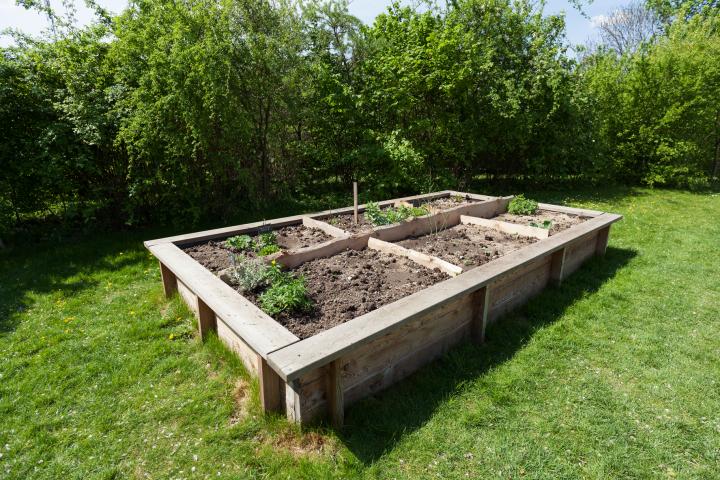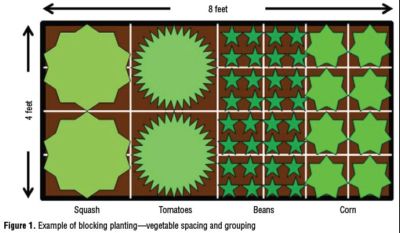
Learn how to easily build your own raised garden bed!
Crestock
Here is advice on how to build a raised garden bed for your backyard. Raised garden beds are fairly easy to construct and even easier to maintain.
Benefits of a Raised Garden
- Ideal for smaller spaces (versus a conventional row garden)
- Great for rocky, poor, or abused soil
- Produces a higher yield for the area, thanks to better drainage and deep rooting
- Allows for a longer growing season, since you can work the soil more quickly in the spring in frost-hardened regions
- Makes gardening easier; for example, intensive planting creates shade mulch to keep the weeds down
Construction Tips
Materials
Many people are concerned about the safely of their wood frame. First, rest assured that CCA pressure-treated wood is banned as it was leaching Arsenic.
To ensure that the wood lasts, there are several options:
- Regular pressure-treated lumber sold today has a mixture of chemicals applied to prevent the moist soil and weather from rotting it. Although pressure-treated wood is certified as safe for organic growing, some people have reservations about using it and there are various eco-friendly alternatives.
- More expensive woods such as cedar contain natural oils which prevent rotting and make them much more durable. They are more expensive to buy but they will last many more years.
- Choosing thicker boards can make the wood last longer. For example two-inch thick locally-sourced larch should last ten years, even without treatment.
You could also use concrete blocks or bricks. Remember that concrete will increase the pH in soil over time.
Some people use railroad ties, however, we would advise against this. Though the very old ones may be fine, newer ties use creosote-treated timber which is toxic.
Planning and Design
- Consider a location that’s level and has the right amount of sunlight.
- In terms of bed size, 4 feet is a common width. Lumber is often cut in 4-feet increments, and you also want to be able to access the garden without stepping into the bed.
- Length isn’t as important. Plots are often 4 feet wide by 8 feet long or 4 feet wide by 12 feet long.
- The depth of the bed can vary. Six inches is a minimum. Plants need at least a 6- to 12-inch rooting zone, so 12 inches is ideal.
- Before you establish the bed, break up and loosen the soil with a garden fork so that it’s not compacted. Go about 6 to 8 inches deep. For improved rooting, some gardeners like to remove the top layer (about a spade’s depth), dig down another layer, and then return the top layer and mix the soil layers together.
Building the Bed
- To support timber beds, place wooden stakes at ever corner (and every few feet for long beds). Place on the inside of the bed so that the stakes are less visible.
- Drive the stakes about 60% (2 feet) into the ground and leave the rest of the stakes exposed above ground.
- Ensure that the stakes are level so that they’re in the ground at the same height, or you’ll have uneven beds.
- Set the lowest boards a couple inches below ground level. Check that they are level.
- Use galvanized nails (or screws) to fix the boards to the stakes.
- Then add any additional rows of boards, fixing them to the stakes, too.
Soil for Raised Beds
- Fill the beds with a mix of topsoil, compost, and other organic material, such as manure, to give your plants a nutrient-rich environment.
- Note that the soil in a raised bed will dry out more quickly. During the spring and fall, this is fine, but during the summer, add straw, mulch, or hay on top of the soil.
- Frequent watering will be critical with raised beds, especially in the early stages of plant growth. Otherwise, raised beds need little maintenance.
Plants for Raised Beds
Almost any crop can be grown in a raised bed. Vegetables are most common, but fruits and even shrubs and trees can be planted, too. Remember that some plants will hang over the edge, so try to think about where you are planting what.
Here’s one of many plot plans to consider, courtesy of the Alabama Cooperative Extension System.

If this article sparks your interest in building raised beds, then we’ll show you how to do it. See our expert video, “How to Use Raised Beds in Your Garden.”







